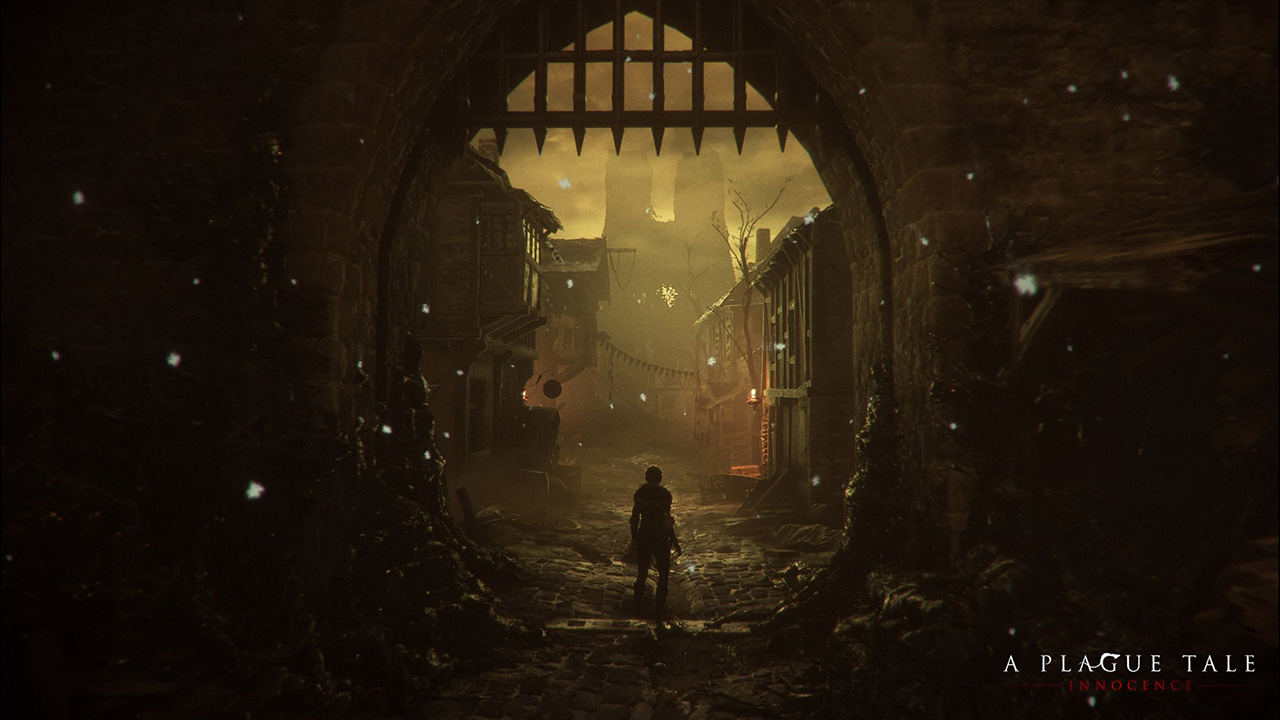| #!sh | |
| set -e | |
| git clone --depth=1 -b inproc-haiku https://github.com/X547/wayland.git | |
| git clone --depth=1 -b 1.26 https://github.com/wayland-project/wayland-protocols.git | |
| git clone --depth=1 https://github.com/X547/wayland-server.git | |
| git clone --depth=1 -b xkbcommon-1.4.1 https://github.com/xkbcommon/libxkbcommon.git | |
| git clone --depth=1 -b xkeyboard-config-2.36 https://github.com/freedesktop/xkeyboard-config.git | |
| git clone --depth=1 -b gtk-3-24-haiku https://github.com/X547/gtk.git gtk3 |
A couple of weeks ago I played (and finished) A Plague Tale, a game by Asobo Studio. I was really captivated by the game, not only by the beautiful graphics but also by the story and the locations in the game. I decided to investigate a bit about the game tech and I was surprised to see it was developed with a custom engine by a relatively small studio. I know there are some companies using custom engines but it's very difficult to find a detailed market study with that kind of information curated and updated. So this article.
Nowadays lots of companies choose engines like Unreal or Unity for their games (or that's what lot of people think) because d
| #include <SFML/Network.hpp> | |
| #include <iostream> | |
| #include <csignal> | |
| #include <atomic> | |
| #include <string> | |
| using namespace std::string_literals; | |
| namespace | |
| { |
| #!/usr/bin/perl -w | |
| # act as a KSysGuard sensor | |
| # provides NVIDIA GPU info via `nvidia-settings` | |
| # Usage (e.g. add gpu temperature sensor) | |
| # 1. save this file, make sure it has a exec permission | |
| # 2. in KSysGuard's menu, open `File` -> `Monitor Remote Machine` | |
| # 3.1 in new dialog, type `Host` whatever you want | |
| # 3.2 set `Connection Type` to `Custom command` |
This document is now at https://gbdev.io/guides/tools.html, please go there instead. It's kept here to avoid breaking links and to preserve history.
Previous versions can be checked out by selecting the "Revisions" tab, and selecting "View file" in the three-dot drop-down menu.
| # Thanks to commenters for providing the base of this much nicer implementation! | |
| # Save and run with $ python 0dedict.py | |
| # You may need to hunt down the dictionary files yourself and change the awful path string below. | |
| # This works for me on MacOS 10.14 Mohave | |
| from struct import unpack | |
| from zlib import decompress | |
| import re | |
| filename = '/System/Library/Assets/com_apple_MobileAsset_DictionaryServices_dictionaryOSX/9f5862030e8f00af171924ebbc23ebfd6e91af78.asset/AssetData/Oxford Dictionary of English.dictionary/Contents/Resources/Body.data' | |
| f = open(filename, 'rb') |
| var fullContent = []; | |
| var contentContainer = document.querySelector('div.gBigOverlay'); | |
| contentContainer.innerHTML = '<img style="display: block; width: 16px; height: 16px; margin: 45% auto" src="' + | |
| 'data:image/gif;base64,R0lGODlhEAAQAPIAAP///wAAAMLCwkJCQgAAAGJiYoKCgpKSkiH+GkNyZWF0ZWQgd2l0aCBhamF4bG9hZC5pbmZvACH5BAAKAAAAIf8LTkVUU0NBUEUyLjADAQAAACwAAAAAEAAQAAADMwi63P4wyklrE2MIOggZnAdOmGYJRbExwroUmcG2LmDEwnHQLVsYOd2mBzkYDAdKa+dIAAAh+QQACgABACwAAAAAEAAQAAADNAi63P5OjCEgG4QMu7DmikRxQlFUYDEZIGBMRVsaqHwctXXf7WEYB4Ag1xjihkMZsiUkKhIAIfkEAAoAAgAsAAAAABAAEAAAAzYIujIjK8pByJDMlFYvBoVjHA70GU7xSUJhmKtwHPAKzLO9HMaoKwJZ7Rf8AYPDDzKpZBqfvwQAIfkEAAoAAwAsAAAAABAAEAAAAzMIumIlK8oyhpHsnFZfhYumCYUhDAQxRIdhHBGqRoKw0R8DYlJd8z0fMDgsGo/IpHI5TAAAIfkEAAoABAAsAAAAABAAEAAAAzIIunInK0rnZBTwGPNMgQwmdsNgXGJUlIWEuR5oWUIpz8pAEAMe6TwfwyYsGo/IpFKSAAAh+QQACgAFACwAAAAAEAAQAAADMwi6IMKQORfjdOe82p4wGccc4CEuQradylesojEMBgsUc2G7sDX3lQGBMLAJibufbSlKAAAh+QQACgAGACwAAAAAEAAQAAADMgi63P7wCRHZnFVdmgHu2nFwlWCI3WGc3TSWhUFGxTAUkGCbtgENBMJAEJsxgMLWzpEAACH5BAAK |
| ## If the package won't let you "Show Package Content" on right-click then... | |
| pkgutil --expand Foo.pkg some/path | |
| ## This will probably yield one more more child .pkg files. Inside them | |
| ## look for the Payload file. Then... | |
| mv Payload Payload.gz | |
| gunzip Payload.gz | |
| ## Which results in Payload uncompressed. Use 'cpio' to extract files... | |
| cpio -iv < Payload |
